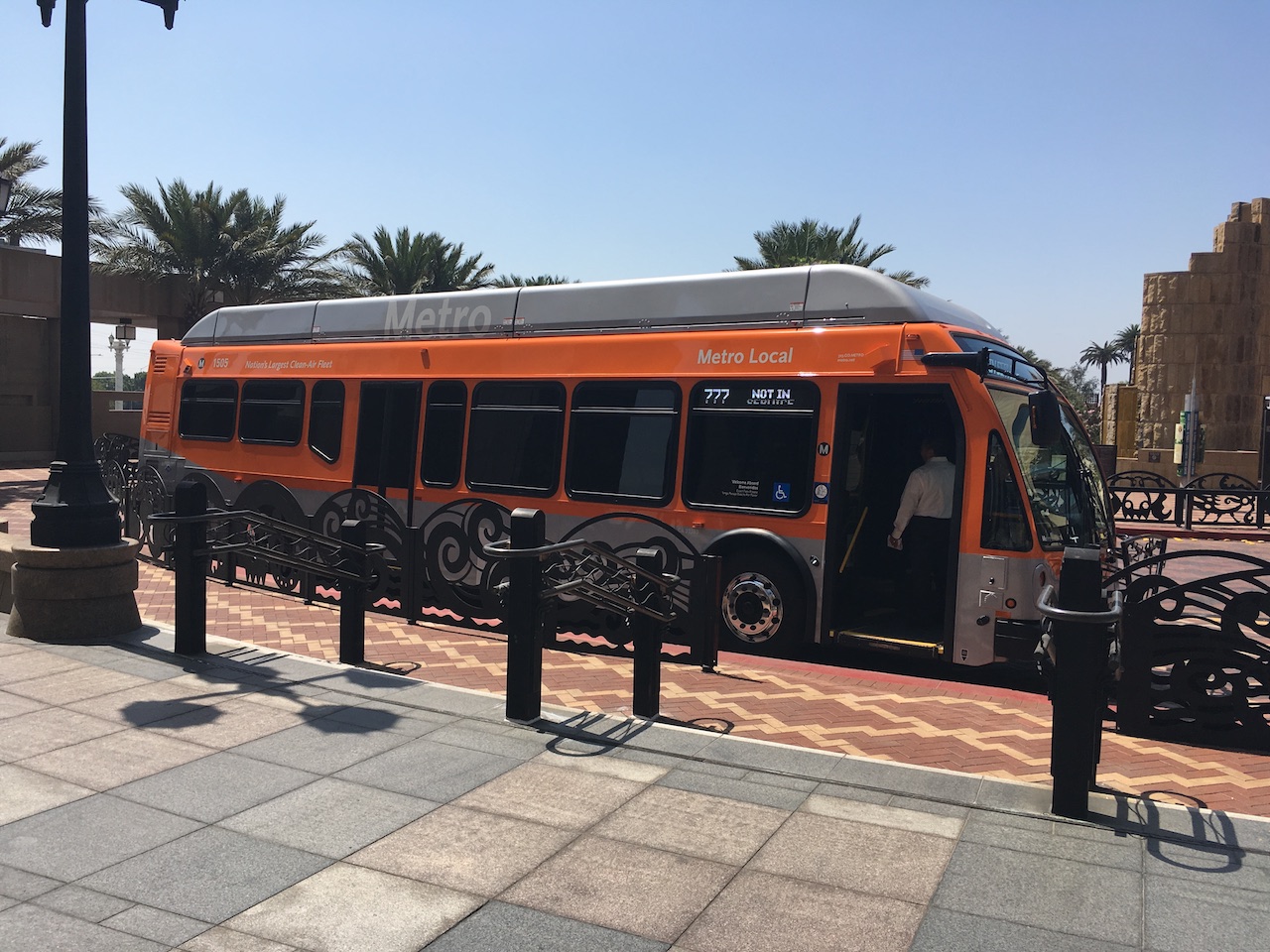Our key message here: In order for the LA Region to re-dedicate itself to fundamentals like bus speed and, most importantly, reducing how long you wait for a bus to arrive, will require increasing investments in bus operations.
By now, everyone admits that Metro has a problem. People aren’t riding buses like they used to. Metro’s bus network drew an average of 887,000 daily boardings during the agency’s 2018 budget year, 22% fewer than it did in 2014.
Losses of such magnitude have cast doubt on the possibility of a transit revolution taking root in Los Angeles, even as nearly all of our region’s goals – from the city’s Mobility Plan 2035 to the state’s greenhouse gas reduction targets to CEO Phil Washington’s own stated ambition to get a quarter of county residents onto transit – depend on the occurrence of such an epochal shift.
For a while, Metro leaders were able to point to the rail network, where ridership grew as new light rail lines opened to Azusa and Santa Monica. But the rail lines have also faltered this year, sliding 2% from 2017. And, in truth, we should’ve expected that to happen.
The bus and rail networks cannot meaningfully be separated. They make up one interdependent system, and that system won’t be a success until bus service can once again earn riders’ time, money, and loyalty.
So… where to begin? Metro recently released its Vision 2028 Plan to lay out a widescreen view of what the Los Angeles of the near future could look like. In the next year, the agency will also wrap up its NextGen Bus Study, which will suggest comprehensive changes designed to maximize network efficiency.
But, so far, despite some encouraging signs (for instance, a focus on enforcing transit-only lanes), most of the evidence suggests that Metro is seeking to rebrand its core transit service, when what it really needs is to re-dedicate itself to fundamentals like bus speed and, most importantly, frequency.
Angelenos have signaled their belief in the importance of a robust transportation network by voting for multiple sales taxes to support Metro, but, to compete with the status quo, transit has to be able to offer something more than long waits at unsheltered bus stops for trips that take more than twice as long as a single occupancy vehicle.
While Vision 2028 aims to increase the average bus speed by 30% (an unattainable goal without a commitment to bus-only lanes), frequency of service is barely mentioned.
What’s more, Metro has not made more than minor adjustments to bus service and has expressed an intention to hold service hours mostly flat for years. On the surface, this is not a recipe for getting Angelenos to embrace transit, but, in fact, it’s even worse than it seems. As congestion has increased in the years since the recession, buses have slowed down, turning every year without an increase in service hours into a de facto service cut.
But frequency can’t be ignored. It is among the most important factors that potential riders consider when choosing whether or not to take transit. Jarrett Walker, who worked with Metro on a previous high frequency bus network, has proposed bus frequencies of 10-15 minutes as necessary for quality service. In Vision 2028, Metro aims for the bottom end of this range, but, elsewhere, other transit experts like Alon Levy have suggested that even 10-minute service might not be sufficiently frequent on the network’s core lines.
It is understandable that Metro wants to get more for its operations money, and that it is frustrated with cities have fought against new bus-only lanes, but they have to find a way to make higher frequency service work. If Los Angeles is ever to have the transit network its residents want, Metro needs to learn that frequency is not a dirty word.








